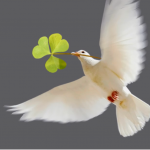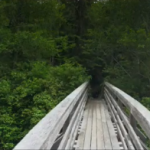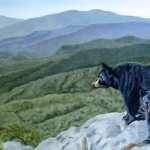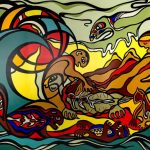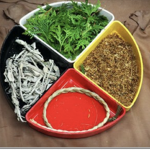This spoken letter was inspired by the heartfelt stories of the Mi’kmawey Debert Cultural Centre Indian Residential School Survivors. Our intention is to offer this spoken letter as a gift to these survivors, and all our Indigenous brothers and sisters who have suffered immensely at the hands of our colonial ancestors. We hope this gift inspires all Canadians to become aware of the history of our Indigenous people, their rights, and the need for their voices to be heard. Our gift is a message of strength, hope, love, and renewal. Our gift is to show we are listening, and we want to write a new history. A future collective action towards reconciliation.
Our spoken letter is a collaboration of our personal perspectives. We are two emerging social work practitioners. Our names are McKenzie Meginbir, and Pamela Campbell. Although our processes differ, our intentions are equal. We both desire to acknowledge the survivor’s experiences, gain a greater understanding of Indigenous culture, and support the reconciliation process.
McKenzie’s Perspective:
“I chose to include colours and animals and their symbolism because this was something very new to me. I knew that the animals had variety of meanings, although I didn’t know what they were, but I never realized that colours and different kinds of wood from trees also had significant meanings in indigenous culture as well. My lack of cultural awareness peaked my interest into wanting to learn more about these symbols and I tried to pair a colour and an animal together that I felt would compliment one another. The symbolism and meaning behind the colours and animals I retrieved from the Indigenous Corporate Training Inc website, under the First Nation Talking Stick Symbolism page. I chose the colours and animals based on what I feel represents how I view the Mi’kmawey Debert Cultural Centre Survivors, as well as everyone else affected by Residential Schools. The level of resiliency, strength, and overall adversity that they have demonstrated and lived by has been overwhelmingly inspirational and I cannot fathom the survivor’s and their family’s experiences and I deeply hope they know that we hear their voices and acknowledge the history and will not ignore its affect on their lives. I also chose to include the Reconciliation Pole simply that I came across it by chance. I was not aware of its existence before I stumbled upon the image and article on the Vancouver Courier website. It confirmed and shed light on my ignorance as a white Euro-Canadian. It shames me to realize and admit how little I know of this horrific Canadian history and of Aboriginal peoples and communities as well. However, I am relieved to know it has been created and installed for the world to see and reflect on. The Reconciliation Totem Pole was Carved by Haida artist 7idansuu “Edenshaw” James Hart, from an 800-year-old Red Cedar Tree”. According to the Vancouver Courier “Thousands of copper nails are symbolic of a child who died in Canada’s residential schools. Survivors, families of victims and survivors, and present-day school children hammered those nails into a 55-foot totem pole. It was installed April 1st, 2017 and faces north on the Main Mall, looking toward the future site of the Indian Residential School History and Dialogue Centre, which will hold records of the Truth and Reconciliation Commission.”
Pamela’s Perspective:
“The stories of the Mi’kmawey Debert Cultural Centre Indian Residential School survivors inspired me to think deeply of my practice philosophy in social work. I believe one of the most important gifts I can offer someone is my willingness to witness their story and offer empathy and understanding. The survivor stories helped me understand the trauma and fear related to their experiences. However, in listening I also heard that their culture and connection to their spiritual teachings has been what gives them strength. This was why I chose to look to nature and the animals given by the creator to the Indigenous people as inspiration for my gifts. The desire to show the survivors I am a witness, I am listening, and they are being heard was my feeling behind my poem. I also incorporated different aspects of nature like the river, and sea as I understand these have meaning in Indigenous culture. I used the river and sea as metaphors for I have heard of teachings that describe Indigenous people taking on the spirit of both animals and nature. When writing my poem and thinking metaphorically, I recalled a recent hike to Skutz Falls originally called Skwets or Squitz, meaning “waterfall” in my local Cowichan nation dialect of Halkomelem. Skutz falls is along the Koksilah river or Xwulqw’selu. The falls were stunning, and they felt spiritual. I could feel their power and energy. There was remnants of old fish ladders and the contrasting image of mans manipulation for capital gain against the beauty and power of the river was remarkable and truly inspirational. While there, I watched an otter family. They were so playful, and curious. I immediately felt happiness. Otters symbolize loyalty, honesty, happiness, laughter, and family in the Indigenous culture. These words are what I wish for the Indigenous survivors through reconciliation. The Otter pelts have traditionally been used for medicine bags and as trade with colonists. Otter’s also experienced the negative effects of colonization which depleted their territory and consequently their populations. However, recent collaborative efforts between conservationist’s, West Coast First Nations, and wildlife advocates like Isabelle Groc have helped renew the otter’s future. Therefore, I offer the spirit of otter as a gift seen through my video capture, the photographs of wildlife advocate Isabelle Groc, Indigenous artist Roy Henry Vickers, and West Coast artist Sue Colman. I included a First Nations flute song I found on the Library and Archives Canada website called Water relatives: Gii’ Con’ no nig. I felt the song signified the river waters strength that never concedes to the contraptions of colonization but also can renew itself.”
McKenzie Meginbir and Pamela Campbell

